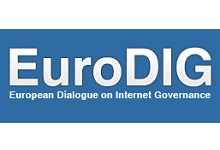Intersection between public policy and technical standards
19 Jun 2019 14:00h - 15:30h
Event report
[Read more session reports and live updates from the EuroDig 2019]
The session was opened and co-moderated by Mr Chris Buckridge (External Relations Manager, RIPE Network Coordination Centre, (RIPE NCC)) and Mr Andrea Beccalli (Stakeholder Engagement Director – Europe, Internet Corporation for Assigned Names and Numbers (ICANN)). They explained that the session would have a strong focus on practical ways in which Internet-related matters can be addressed in a co-operative manner and whether public policy and technical standards can supplement each other.
Mr Peter Koch (Senior Policy Advisor, DENIC) noted that it is important to understand how creating technical standards is influenced by or reacts to public policy concerns. He also pointed out that there are many standards in existence which are not sufficiently deployed to address security concerns.
Koch highlighted some of the key features of the Internet such as the freedom of innovation; the different layers of the Internet can be developed individually, but usually abide by technical standards nonetheless. He further noted that standards are very important because they make sure that every device can understand the message which is sent and make it understandable to humans. However, he emphasised that all of these standards are adopted on a voluntary basis and some standards are adopted through peer pressure.
According to Koch, there are standards such as the domain name system security extension (DNSSEC) which are harder to deploy; since they affect the core of the Internet, they can put overall Internet connectivity at risk. To address these concerns, Koch underlined the importance of maintaining a collaborative approach to standard setting and policy-making given that these should not only be adopted but also recognised by the wider Internet community.
Mr Gerben Klein Baltink (Chairman, Dutch Internet Standards Platform) explained that the Dutch Internet standard community put much effort into having a truly multistakeholder representation. He mentioned that the Dutch Internet Standards Platform identified a few standards in 2014 to ensure that the Internet remains free, open, and secure. In order to do so, the organisation is measuring the application of these standards and inquiring why some of the identified standards are more successful than others. Thereby, they have obtained insights into the implementation aspect of standards and realised that applying standards is not the only way to make the Internet work since it also depends on the interplay with public policies. This measure allows the organisation to see how the broader community reacts to standards and to see whether the policy response is adequate.
Mr Wolfgang Kleinwächter (Professor Emeritus, University of Aarhus, Commissioner, Global Commission on the Stability of Cyberspace (GCSC)) noted that the Internet is a layered system and that there are policies and standards on each layer and that the intersection between these layers must not be overlooked.
Kleinwächter further spoke about the complexity of the Internet and the challenges that it represents for lawmakers. He highlighted that enhanced co-operation among all stakeholders would be the most conducive way forward. However, in order to collaborate, lawmakers and coders need to get to a similar understanding of each other’s fields to build the trust which is necessary for better co-operation. According to Kleinwächter, it is only through the breaking down of silos that the Internet can be governed and that decisions (both from the policy and the standards side) with unexpected outcomes can be avoided. He also noted that laws are sometimes inflexible and can be an obstacle to innovation. However, the policy-making and standard-setting fields are complementary and they should not be seen as the only regulatory pieces of the broader Internet governance puzzle.
By Cedric Amon
Related topics
Related event

